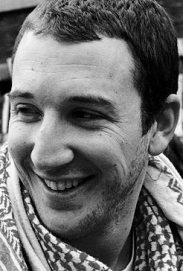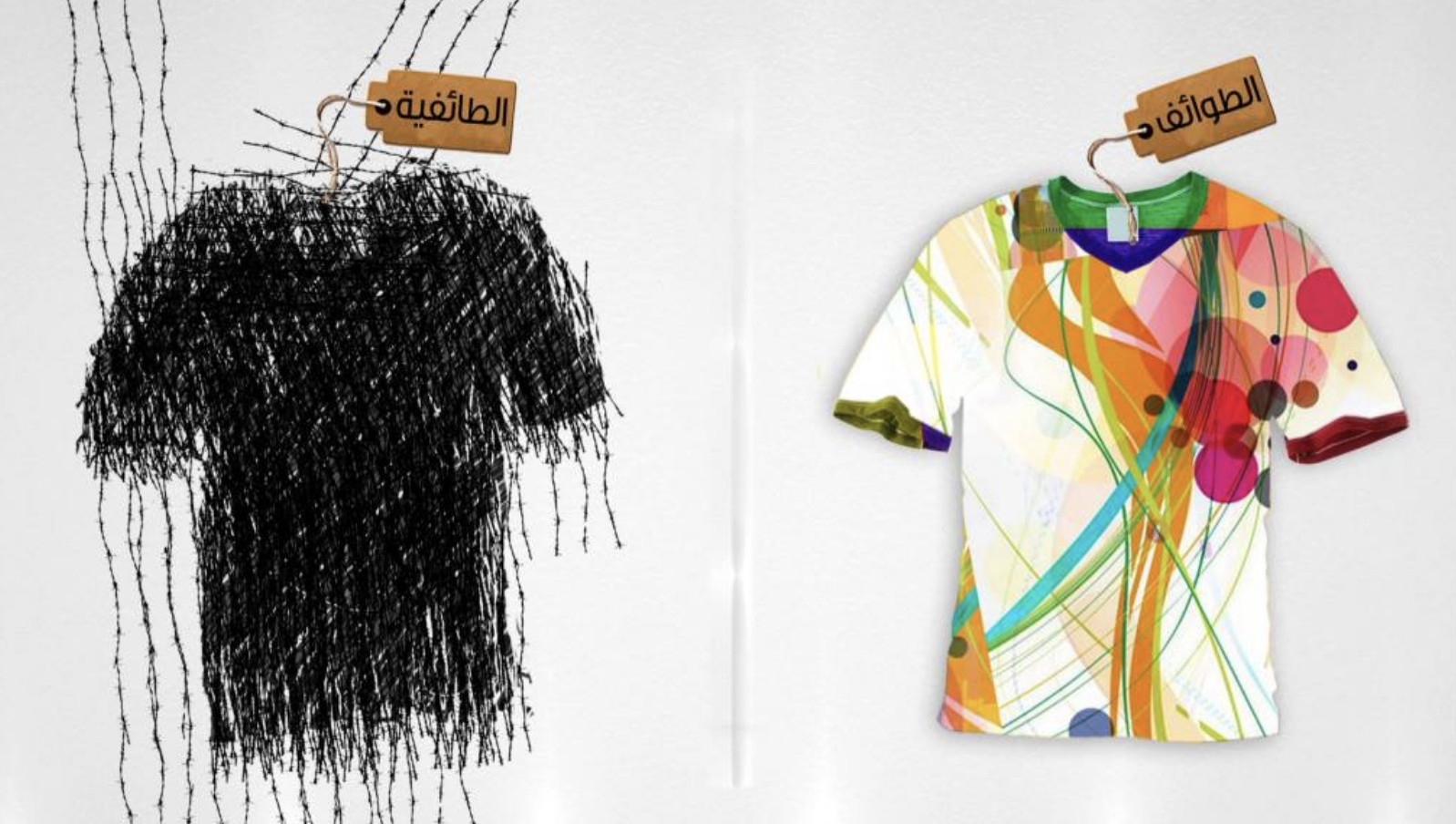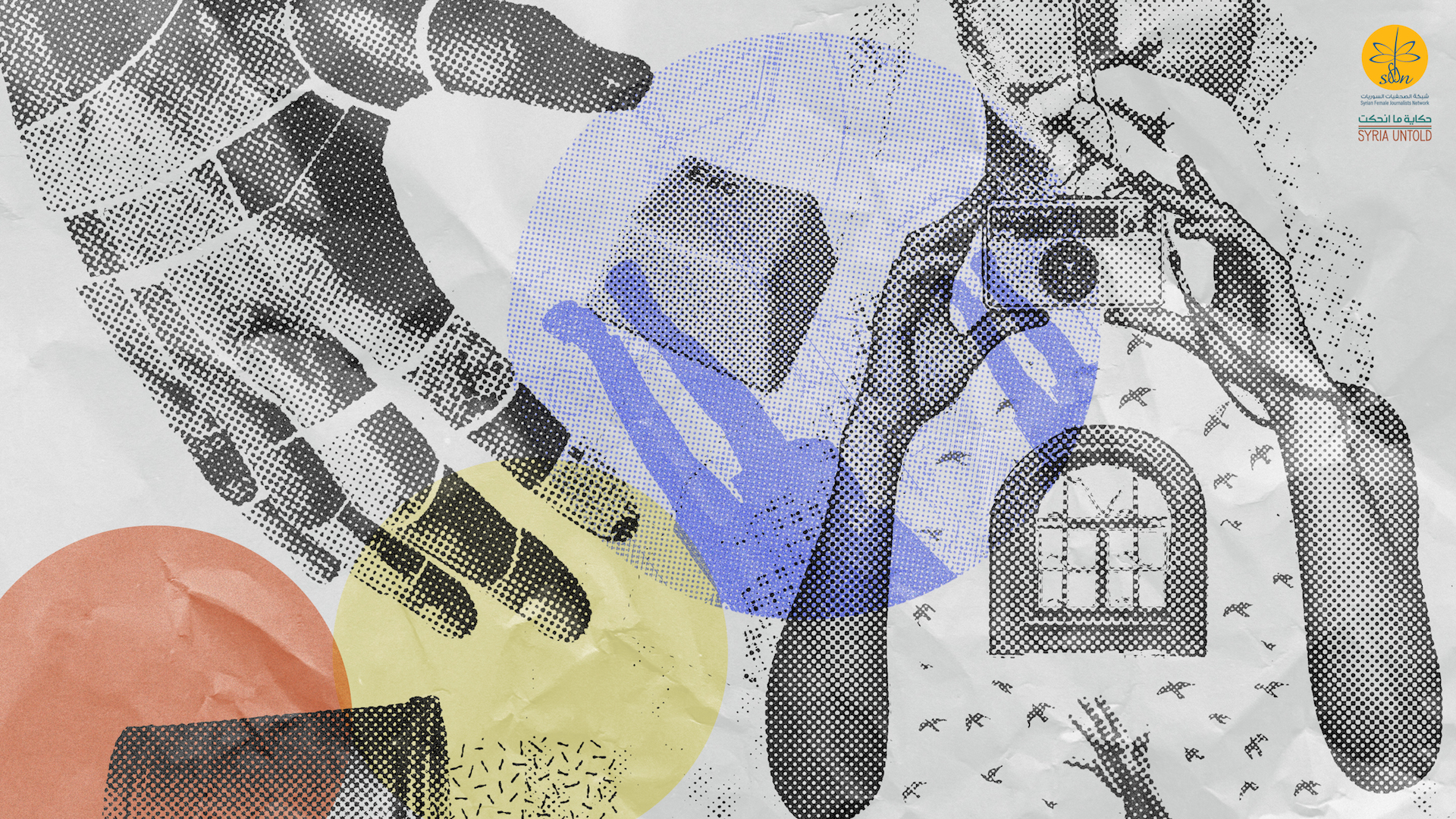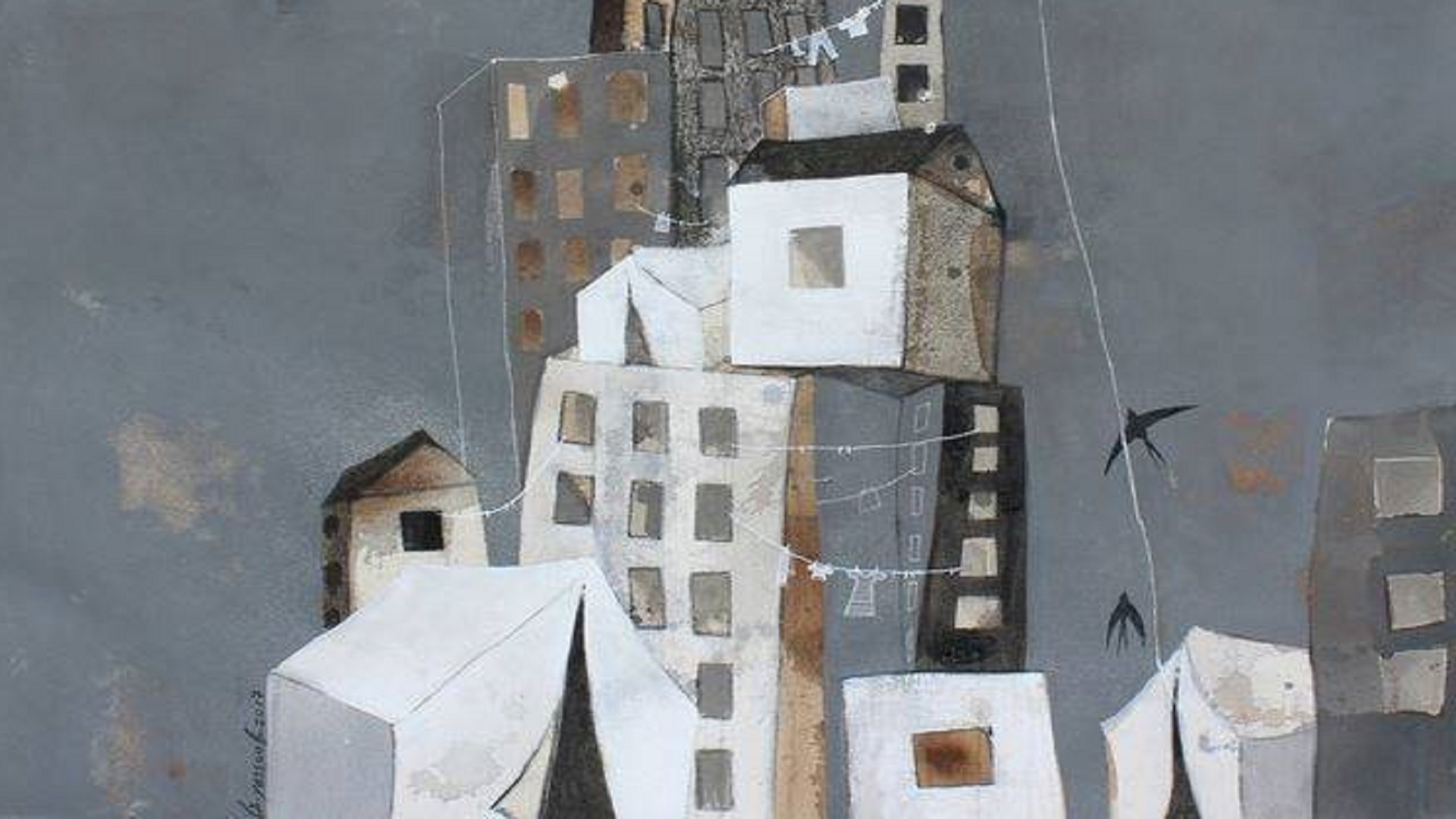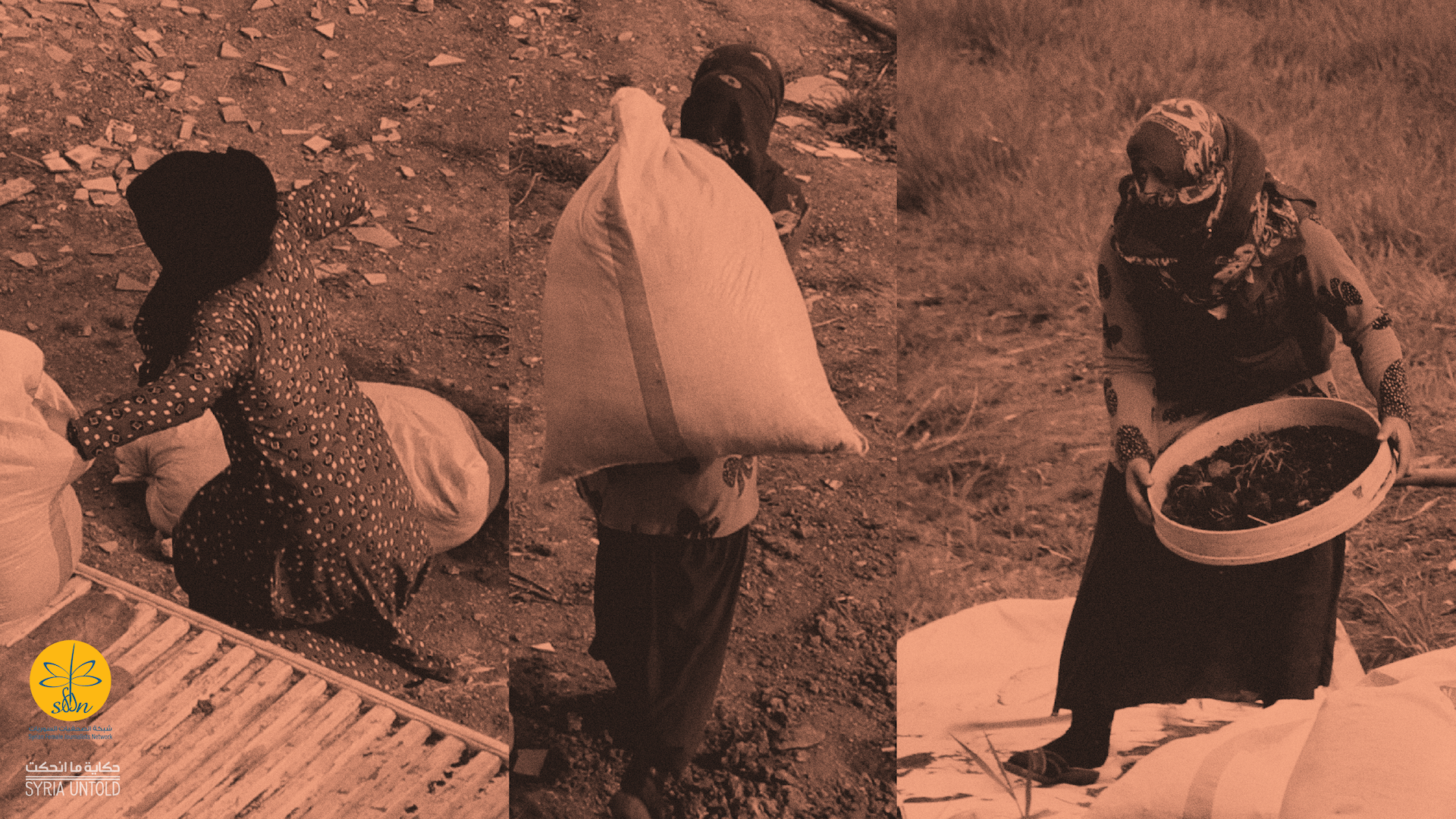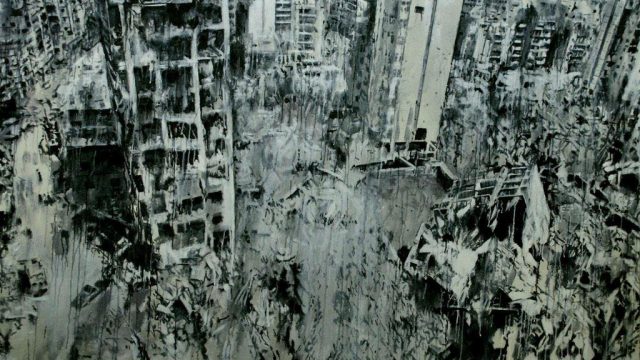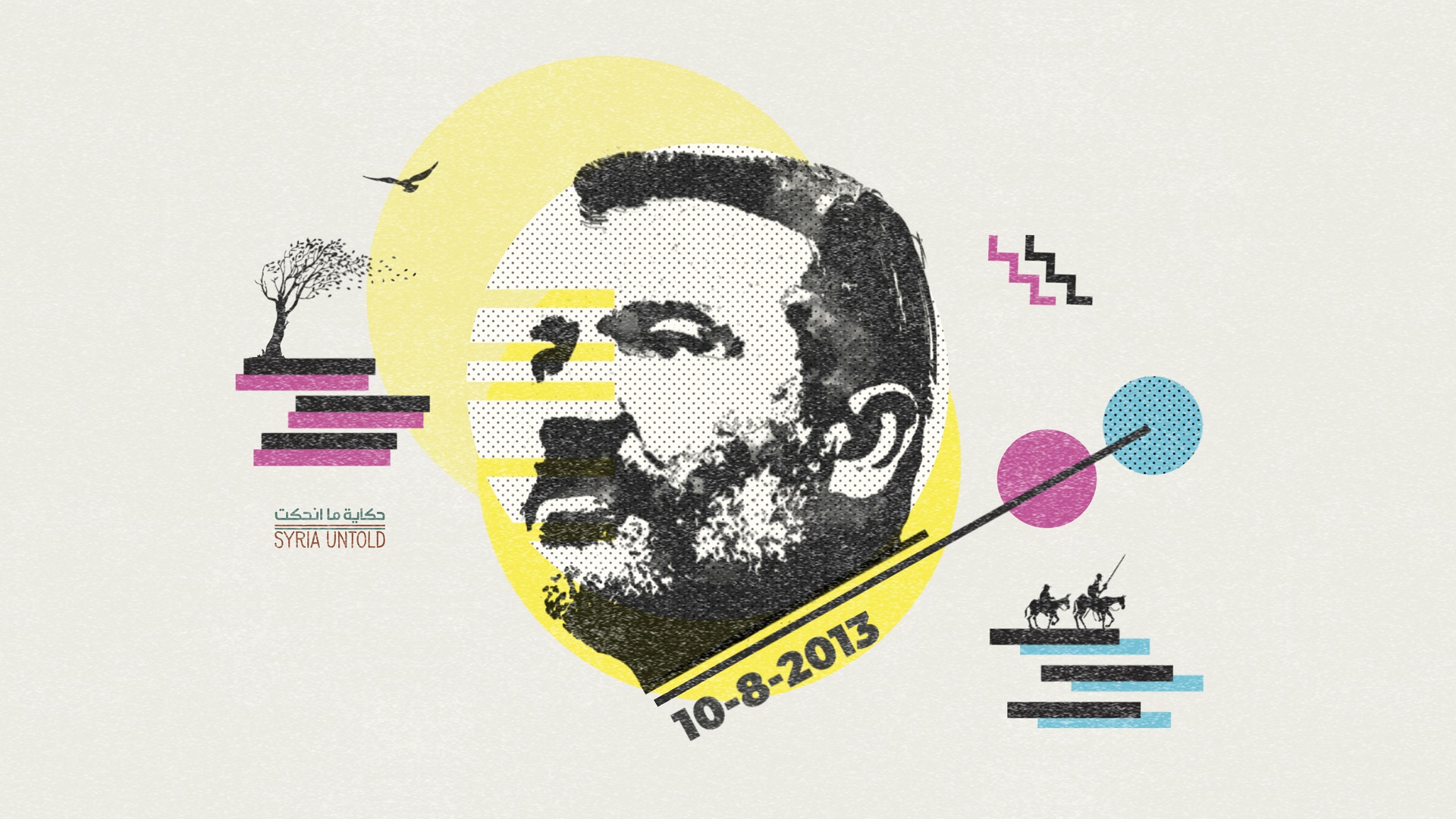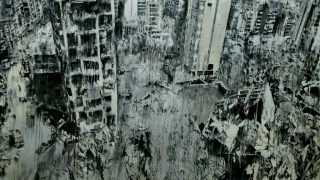This article is the second in a two-part series examining the history of Syria's Labor Communist Party, through the recent book The Story of the Labor Communist Party of Syria (1976-1992): A Chapter of the History of the Left in Syria by party member Rateb Shabo.
Read part one here.
Outside Assad and the Muslim Brotherhood, a ‘third camp’
The 1970s and 1980s in Syria saw violent conflict between the regime and the Islamic fundamentalist movements led by the Muslim Brotherhood (MB). Tensions culminated in the 1982 Hama massacre, in which regime forces besieged the city and killed thousands of residents.
In Shabo’s telling, tensions between the two axes constituted the first “political test” for the League of Communist Action (LCA), the group that would later become the Labor Communist Party (LCP) (p. 115). The LCA had long opposed the regime of Hafez al-Assad, whom it considered corrupt; a dictator opposed to the interests of both the popular classes and the Palestinian cause.
The LCA and the Muslim Brotherhood (MB), at least ostensibly, shared the same general goal: overthrowing Assad’s regime.
But for the LCA, the MB’s approach proved problematic, with the latter’s anti-democratic [i] and sectarian discourses and practices. MB members oftentimes killed Alawite personalities despite them having no direct political links to the regime [ii].
Syria’s Labor Communist Party, a rich political history
16 October 2020
Popular Oral Culture and Sectarianism, a Materialist Analysis
31 October 2018
The LCA saw the conflict between these two camps—the Syrian regime and the MB—as a struggle between two sections of the Syrian bourgeoisie, a struggle that was neither democratic nor “patriotic,” in terms of serving the interests of the country. On one side, there was the bureaucratic bourgeoisie dominated by the regime; on the other, the traditional bourgeoisie, especially prominent traders, allied with the MB. Both sections of the bourgeoisie stood against the interests of the popular classes, in the LCA’s view.
In response, the LCA worked towards the creation of a so-called “third camp.”
In 1979, the party’s newspaper, the Red Banner, published an editorial calling on the formation of what it named the United Popular Front. The group, as envisioned by the LCA, would be composed of political forces representing Syria’s popular classes, and would stand in opposition to both the regime and the MB while pulling at the popular bases of these two sides (p. 117) [iii].
Later on, LCA explained more precisely that it envisioned this front as the organizational tool for the popular classes to produce a true social revolution in Syria (p. 152).
The LCA criticized the Syrian political parties that were part of the competing Progressive National Front alliance, which supported the Assad regime in its violent confrontation with the MB, as well as the left-leaning Lebanese National Movement alliance and some Palestinian resistance organizations (p. 117). These groups still perceived the Syrian regime as a national, or patriotic, and progressive force.
The LCP had long argued that the liberation of Palestine came along with the overthrow of regional regimes and the establishment of popular democracies as bases to support the Palestinian revolution. The repression of Palestinian organizations in Jordan’s Black September conflict in 1970, as well as Hafez al-Assad’s opposition to Palestinian resistance to Israel within its own borders, only served to solidify the party’s stance.
Despite its efforts to recruit other leftist parties into its United Popular Front, the LCA had too little gravitational pull. Other leftist groups formed their own coalition only several months after the Red Banner published its editorial. These groups came together to sign what they called the “Pact of the Democratic National Gathering” (p. 160) [iv].
The LCA’s continuous contact with the Arab Socialist Union, a Nasserist party led by early Baath proponent Jamal al-Atassi, as well as the Democratic Socialist Arab Baath Party, linked to left-leaning former Baathist general Salah Jadid, did not earn it a place in the Pact. The Syrian Communist Party - Political Bureau (SCP-PB), one prominent signatory to the Pact, vetoed the LCA’s inclusion.
The years prior to the Pact’s signing had seen growing hostility from the SCP-PB towards the LCA. The former often refused official discussions with the LCA, though individual members of both parties had privately made contact with one another. SCP-PB leaders went as far as accusing the LCA of working with Syrian or Russian security forces to prevent the growth of their movement (p. 140) [v].
Meanwhile, the Pact had little class-related content or objective. The LCA criticized the positions of the majority of the parties within the Pact, particularly the SCP-PB [vi]. In the LCA’s view, Pact signatories saw the actions of the MB as an expression of popular movements and the streets, and not of a particular party. The Pact also failed to condemn the MB’s spree of sectarian assassinations. In ensuing years, the signatories of the Pact would take a colder stance towards the MB, albeit without any radical criticism.
The Labor Communist Party that soon formed out of the LCA sought throughout the 1980s to create a large, independent progressive front against Assad and the MB. This was particularly true after the devastation of the Hama massacre in 1982, when LCP members once again called for the formation of a third camp separate from these two opposing sides.
Palestinian resistance
The Palestinian cause had been central to the LCP since the party’s origins in Syria’s “Marxist circles,” collective political groups that emerged in the 1960s.
Palestinian refugees in Syria were often active or close to the LCP. Many members participated in armed resistance alongside the PLO and Palestinian leftist organizations such as the Democratic Front for the Liberation of Palestine (DFLP) and the Popular Front for the Liberation of Palestine (PFLP) in refugee camps in Syria, Lebanon and Jordan. In some documented cases, people who had attended sessions of the Marxist circles later lost their lives in military operations against Israel. Some members of the party fought alongside Palestinian organizations to resist Israeli occupation forces’ siege of Beirut in 1982.
Just as with the Palestinian resistance, it was unity from below, from the revolutionaries themselves who hoped to overthrow the Syrian regime, that would advance the liberation of Kurdish population, they argued.
The LCP had long argued that the liberation of Palestine came along with the overthrow of regional regimes and the establishment of popular democracies as bases to support the Palestinian revolution (p. 69). The repression of Palestinian organizations in Jordan’s Black September conflict in 1970, as well as Hafez al-Assad’s opposition to Palestinian resistance to Israel within its own borders, only served to solidify the party’s stance.
The LCP’s opposition to the Assad regime grew following the intervention of the Syrian army in Lebanon in 1976, which was widely condemned by democratic and leftist opposition groups and professional associations in Syria [vii].
A ‘missing piece’ in the debate: As Caesar sanctions go into effect, are ordinary Syrians protected?
18 June 2020
Then in 1982, the LCP sent two groups of volunteers across the border to Lebanon to train with PLO armed forces and serve as auxiliaries for the Palestinian resistance. Prior to this, during the Israeli military siege of Beirut, the LCP sent 11 doctors—members or close friends of the party—to the Lebanese capital to help treat wounded Palestinian resistance fighters. Other members worked to guard their headquarters so that the Palestinian fighters would be free to go fight (p. 240).
One year later, the LCP played a key role in the establishment of the Popular Committees (1983-1986), a movement that gathered Palestinians in Syria [viii]. The movement described itself in its founding document as a national, democratic and popular structure, though one not seeking to become a formal political party. Committees were organized by neighborhood or profession, and each would be composed of four to five people. The committees were independent from one another in their cultural and political activities, only coordinating in the distribution of the propaganda and official public statements (pp. 240-241).
Palestinian refugee camps in Damascus were witnessing intense political activism at the time. Demonstrations in the camps multiplied, criticizing attacks on Palestinians in Lebanon by groups backed by the Syrian regime. Syrian security forces responded by arresting several hundred Palestinians.
Security forces also severely curtailed Palestinians’ travel outside Syria, while continued repression made public meetings by Palestinian groups nearly impossible to organize, except for those in favor of the regime or supported by Syrian authorities.
The repression continued in the subsequent years, especially during 1985 and 1986 public protests in Syria against the “War of the Camps” military operations on Palestinian camps in Beirut, as well as during demonstrations on Palestinian Land Day in 1986 [ix]. Protests and demonstrations diminished considerably in the Palestinian refugee camps following this last wave of repression. Syrian security forces continued, however, to pursue a policy of violent intimidation against Palestinians in the camps.
By 1990, approximately 2,500 Palestinian political prisoners were reportedly held in Syrian prisons [x].
An attempt at self-determination for Syria’s Kurds
The LCA, and later its successor, the LCP, differed from other Syrian leftist movements in its support of self-determination for Kurdish people in Syria and the region. Other movements opposed or simply ignored Kurdish self-determination, while the LCP’s newspaper and brochures condemned discrimination of Syria’s Kurds.
Their argument: unity of Arab and Kurdish revolutionary parties against the dictatorial bourgeois regime and reactionary parties—in other words, the MB—was the way to achieve self-determination for the Kurdish people. Just as with the Palestinian resistance, it was unity from below, from the revolutionaries themselves who hoped to overthrow the Syrian regime, that would advance the liberation of Kurdish population, they argued.
Early on, the party understood that the emancipation of Syria’s popular classes was linked to that of popular classes across the region, especially Palestinians and Kurds. The LCP saw these groups’ struggles as their own, and understood that no salvation would come from states in the region, even if they professed sympathy to those causes.
The LCP participated each year in public celebrations of Nawruz, the springtime new year festival observed by Kurds, Iranians and other peoples. The holiday became an occasion for Kurdish communities and political groups to demand their national, cultural and democratic rights. LCP publications described celebrations of Nawruz as an act of resistance and affirmation of Kurdish national rights, in a country whose government was actively oppressing its Kurdish population (p. 142).
The oppression was widespread. In 1986, the Syrian government forbade any signs of Nawruz celebrations in two Damascus suburbs, and responded violently to participants who nevertheless mobilized. Security forces killed one young Kurdish man and injured others. Afterwards, participants organized a sit-in and blocked a main road. Members of the LCP participated in this demonstration. They also published a statement condemning police violence and demanding the liberation of all those who had been arrested (p. 143). The statement was translated into Kurdish.
Women seek refuge from society in a northeastern Syrian village, no men allowed
07 July 2020
Raqqa, at the center of the universe
16 August 2020
The LCP made attempts to expand the model of the Palestinian Popular Committees to Syria’s Kurdish population, but these failed as the vast majority of Kurdish parties declined to establish these groups. Meanwhile, Syrian security forces waged a new campaign against the LCP in 1986, considerably weakening its capabilities.
Collaboration between Syrian Arab and Kurdish political groups was long seen as a red line by the Syrian regime, which repressed such action. The Syrian regime’s acceptance of certain Kurdish political groups from Turkey and Iraq within the country in these years, such as the Kurdistan Workers’ Party (PKK), the Patriotic Union of Kurdistan (PUK) led by Iraqi Kurdish figure Jalal Talabani and the Kurdish Democratic Party (KDP) affiliated with the Masoud Barzani meant that these movements abstained from any attempt to mobilize Syrian Kurds against Damascus.
Lessons for Syria’s opposition
Why is the experience of the LCP still relevant? Early on, the party understood that the emancipation of Syria’s popular classes was linked to that of popular classes across the region, especially Palestinians and Kurds. The LCP saw these groups’ struggles as their own, and understood that no salvation would come from states in the region, even if they professed sympathy to those causes.
This view comes in stark contrast with today’s main Syrian opposition bodies in exile, especially the Syrian National Council and the National Coalition for Syrian Revolution and Opposition Forces, also known as the Syrian National Coalition. Both bodies depended on foreign powers from the outset, and adapted their political actions and positions accordingly. The result: rather than seeing the connection between the popular struggles of the region, the two bodies often supported the oppressive actions of these states, such as Turkey’s oppression of Kurds within its own borders and in Syria, or Saudi Arabia’s war in Yemen.
Meanwhile, the Palestinian cause has been ignored and silenced in order not to scare regional and western allies. Even worse, the vast majority of Syrian opposition bodies have opposed Kurdish national rights and replicated racist discourses and oppressive actions against Kurdish people, even supporting the Turkish-led and Syrian rebel-assisted invasions of Syria’s northern Afrin region and other areas. The campaigns led to numerous violations of human rights and forced thousands of Kurds into displacement.
Finally, no independent and progressive political camp was able to develop after 2011 to oppose both the regime and Islamic fundamentalist forces. Rather, the Syrian Democratic People's Party and other democratic and liberal forces joined an alliance with the Muslim Brotherhood and other conservative right wing currents of the Syrian opposition, which were far more represented, to establish the Syrian National Council. Similar dynamics continued with the Coalition [xi]. In addition, these actors did not hesitate to include some Islamic fundamentalist personalities, and attempted on some occasions to normalize or defend jihadist movements.
Here, the political experiences and debates of the LCP still matter: in the strategies that can be adopted against both the Syrian regime and religious fundamentalist groups, in building an independent progressive political camp, in tackling Palestinian and Kurdish self-determination. All these issues remain as current as they were when the LCP attempted to tackle them.
Memory of the LCP’s political ideology should not be lost. Syrians watching today must seize upon the lessons of the party’s progressive stance to build a future resistance, one that finds strength without repeating the same recent mistakes.
The author would like to thank Rateb Shabo and Munif Mulhem for their assistance and time in the process of writing this piece.
Notes:
[i] For example, in 1981, the deputy leader of the Muslim Brotherhood, Ali al-Bayanuni, in an interview with French newspaper Le Monde, declared that if the MB would reach power, the freedom to establish parties would not be extended to Marxists groups, even ones opposed to the regime.
[ii] In June 1979, members of the Muslim Brotherhood and Fighting Vanguards (connected to the MB) committed a massacre by killing around 80 Alawi cadets in the Aleppo Artillery School.
[iii] The title of the editorial featured in the Red Banner (number 36), was “Towards the Building of a United Popular Front.”
[iv] It was composed of the Democratic Arab Socialist Union, Syrian Communist Party – Political Bureau; the Arab Revolutionary Workers Party, the Arab Socialist Movement and the Democratic Socialist Arab Baath Party.
[v] Riyad al-Turk continued even later on to have a sectarian political attitude towards members of the LCP. See this testimony of Munif Mulhem https://www.facebook.com/monif.mulhem/posts/10216522911054208
[vi] In an internal letter in July 1980, the SCP-PB exposed three possibilities in the development of the political regime in Syria, including one relying on the bourgeois class with “European” aspirations--in other words in favor of democracy. An alliance with wider sectors of the Syrian bourgeoisie and the Muslim Brotherhood was always a potential possibility for the SCP-PB.
[vii] In 1980, all professional associations were dissolved by governmental decree. The regime then established new professional associations and appointed new leaders who mainly acted as corporatist arms of the state and the ruling party. At the same time, crackdowns against trade unionists affiliated with or who identified with opposition parties, who had been elected over official Baathist candidates in the 1978 and 1979 elections, intensified.
[viii] The siege and departure from Beirut of the PLO, internal confrontations within Fatah leadership and then the war of the camps.
[ix] In March 1976, a vast plan to expropriate Palestinians lands in the Galilee region had just been published. It was not the first time since 1948 that Palestinian land had been confiscated to establish or expand Israeli settlements, but this time the villages of northern Galilee had decided to react massively. They announced a general strike for March 30. The strike escalated into protests which clashed with the Israel occupation army deployed in the region. Israeli occupation forces killed six Palestinians and wounded several hundred. Since then, this day is commemorated annually on March 30, known as “Land Day.”
[x] Middle East Watch (1991). Syria Unmasked: The Suppression of Human Rights by the Asad Regime, New Haven, CT, Yale University Press. pp. 106–108
[xi] Even Riyad al-Turk declared in September 2018 that one of the initial problems with the SNC at its establishment was that the MB and groups linked to it dominated the opposition body. See Mohammad Ali Atassi, “In His First Interview after His Departure from Syria” (Arabic), Al-Quds Al-Arabi, September 2, 2018, http://www.alquds.co.uk/?p=1007786.


